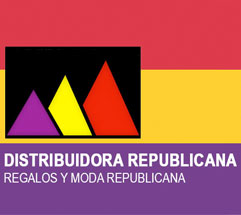Schengen Agreement Map
The agreement removed the common border controls of signatories within the zone, allowing individuals to travel freely within the zone. It gives residents of border areas the freedom to cross the borders of fixed checkpoints and has harmonized visa policy, meaning you can get a Schengen visa for short stays of less than 90 days. Under the Schengen Agreement, travel from one country to another within the Schengen area is done without border controls. The Schengen visa even allows you to visit all the countries of the Schengen area and cross internal borders without further formalities. However, some third-country nationals are allowed to stay more than 90 days in the Schengen area without having to apply for a long-stay visa. For example, France does not require citizens of Andorra, Monaco, San Marino and Vatican City to apply for an extended residence visa. [252] In addition, Article 20, paragraph 2, of the Schengen Agreement continues to apply it «in exceptional circumstances» and bilateral agreements concluded by some signatory states with other countries prior to the convention`s entry into force. For example, New Zealand citizens can apply to any Schengen country (Austria, Belgium, Czech Republic, Denmark, Finland, France, Germany, Greece, Iceland, Italy, Luxembourg, the Netherlands, Norway, Poland, Portugal, Spain, Sweden and Switzerland) which had already concluded bilateral visa-free agreements with the New Zealand government prior to the agreement, without the need to apply for a long-stay visa, will apply 90 days within 180 days for travel to other Schengen countries. [253] [254] [255] [256] [257] [258] [259] [260] [262] [262] [263] [255] [256] [256] [256] 256] [257] [257] [258] [259] [261] [262] [262] [263] [255] [256] [256] [256] [256] [256] [256] [256] [256] 257] [257] [258] [258] [259] [259] [258] [258] [259] [261] [262] [262] [262] [262] [262] [262] [262] [262] 263] [255] [256] [256] [257] [258] [259 EEA and Swiss citizens (as well as family members) and other routes reserved for all travellers, regardless of nationality.
[217] At some border crossing points at the external border, there is a third route for Schedule II travellers (i.e. third-country/EEA/Swiss nationals who are exempt from the visa requirement). [218] Although Andorran and San Marines citizens are not EU or EEA citizens, they may use special routes for EU, EEA and Swiss citizens. [219] British citizens will not be able to use the EU`s trace after Brexit under current rules, unless such a right is introduced into the Brexit deal with the EU. After Slovakia, Denmark, the Czech Republic and Poland announced in mid-March the complete closure of their national borders, European Commission President Ursula von der Leyen said that «some controls may be justified, but the World Health Organization does not consider general travel bans to be the most effective. In addition, they have strong social and economic repercussions, disrupting people`s lives and affairs across borders. [166] Von der Leyen also apologised to Italy, amid widespread Italian discontent over Europe`s lack of solidarity. [167] Until the end of March 2020, almost all of Schengen`s internal borders were closed to non-essential travel. By July 2020, most of the borders closed due to coronavirus had been reopened.
From 2015[update], Andorra, Monaco and San Marino negotiated an association agreement with the EU. Andorra`s ambassador to Spain, Jaume Gaytén, said he hoped the agreement would include provisions that would make states associated with the Schengen agreement. [114] The Schengen area initially had its legal basis outside the European Economic Community at the time, since it had been created by a sub-group of Community Member States with two international agreements: negotiations on visa liberalisation between the EU and the Western Balkan countries (excluding Kosovo) were initiated at the c

